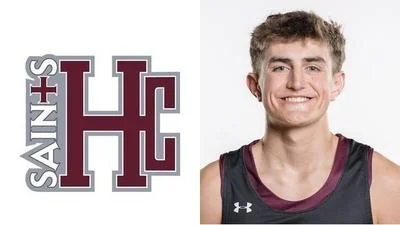Centre Township Branch Library recently issued the following announcement.
Tribute exhibit to renowned South Bend artist Edward Basker opens April 23
Edward Basker Exhibit Opening Event
April 23 | 4-5 p.m. | Main Library
The Library will host a tribute exhibit of watercolor works by the renowned South Bend artist, Edward Basker (1908-1972), beginning April 23.
The exhibit is set to feature close to 50 original watercolor paintings and sketches dating back to as early as the 1940’s. This showing will feature selected works from museums, private individuals, public spaces, and the artist’s family, all gathered into a public display for any art enthusiast to enjoy.
Works to be displayed include landscapes gathered from both local regions and across the country in Basker’s extensive travels. Basker’s style remains distinctive more than fifty years later, giving a scene a recognizable presence, yet not directly picturesque, almost giving the viewer a sense of Déjà vu.
About the Artist
Edward Basker, a native Hoosier from South Bend, Indiana, won his first blue ribbon at the age of six. During his life, he would go on to win the outstanding award of the entire exhibition at the Indiana Art Salon four out of ten years. Basker was a consistent winner of awards at the annual Hoosier Salon in Indianapolis: the highly regarded jury award of distinction, the Kappa Kappa Kappa Award in 1961-63-68; the Ernest M. Morris Memorial Award in 1965-1966; the John Balfour Memorial Award in 1959-64; the coveted J.C. Honeywell Award in 1969; and the Delta Sigma Kappa Sorority Purchase Prize in 1970.
Through Basker’s career, he held over 30 one-man watercolor exhibitions in Iowa, Indiana, Illinois, and even Texas. This most recent exhibit, hosted by the Saint Joe County Public Library, 50 years since his passing, honors his long-standing art presence both within our local community and abroad.
Throughout his life, Basker made over 10,000 sketches of scenes, fragments of landscapes, mostly cliffs, sand dunes, houses, barns, logs, trees, rock formations, mountains, and streams from all over the United States, which helped him to analyze the components of his compositions, forming a dictionary of concepts that helped him to formulate his own language and idiom.
Basker would commonly paint from the middle seat of his station wagon, using the back seat as an easel. His equipment was also simple: paper, a canteen of water, a three-inch brush and a one-inch brush, a small rigger brush, and a pocket knife. He once said that his primary motive is “my desire to experience what I see and transfer that experience into paint. By sharing that experience in a painting, I share my gift with others.”
Original source can be found here.



 Alerts Sign-up
Alerts Sign-up